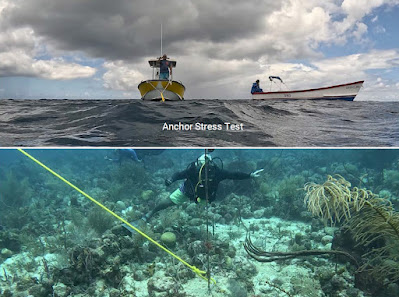In accordance with
the maintenance schedule suggested by the CCCCC, the CREWS station was visited
approximately two weeks post-installation on May 31, 2023 and again on June 29,
2023 to assess its condition. The state of the various components are outlined
below.
Condition of CREWS Station Components
Reports had been
received that the beacon was not functioning days after the station’s
installation. On the first visit, efforts were made to reprogram the beacon.
The required codes were entered to test the battery health and reset the beacon
to its previous settings. However, it was reported once more that the beacon
still remained unlit at night. On contacting the CCCCC technician, it was
suggested that the beacon be completely uninstalled from the station and
properly assessed prior to its reinstallation. The beacon was uninstalled on
June 29, 2023. Once retrieved, the battery was changed, charged and the new
flashing code programmed. It was then verified that the beacon was being
activated on dim light conditions before being reinstalled on the station on July 5, 2023.
The above-water
components of the station were wiped with a cloth and freshwater. One of the
bolts connecting the solar panel to the station was noticeably missing. It was
reattached to the frame utilising a cable tie (Figure 1). Other than this
failure, all other bolts and sensors were in good condition.
Figure 1: Cable tie used to reattach the solar
panel
Shackles on the mooring lines were in goood condition beyond
a thin coating of algae (Figure 2). The butterfly clips holding the bolts on
the anchors were also in good condition.
Figure 2: Bolts at the southern U-anchor
The Seabird water
quality monitoring equipment was cleaned and cables remained securely fastened.
Some of the butterfly clips on the cage were seen to be straitening on the
first visit. This was corrected on the second visit in June. The
sacrificial anode will likely need to be replaced soon.
Figure 3: Degrading sacrificial anode.















